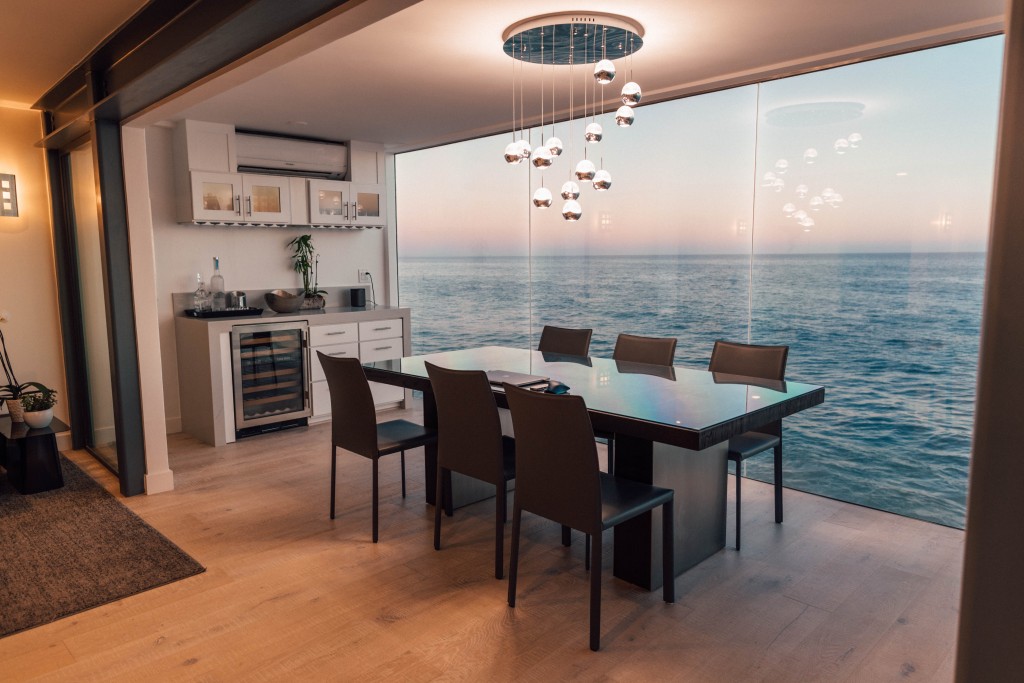Lighting & Interior Design: A Beginner’s Guide
Sight is our dominant sense and fundamental to our survival. But, as a species, we are also sensitive to how much light we get. Recent scientific studies have proven the impact of lighting on our health and mood. In addition, lighting affects our perception of colours and textures. Still, more importantly, there is a close connection between lighting and our emotions. Primitively speaking, negative spaces make us uncomfortable.
In contrast, well-lit spaces have the opposite effect and make us feel safer. In other words, lighting is more than just about illumination. Poor lighting can cause headaches, eyestrain, poor sleep and vision, and lower productivity. While it also contributes to a range of other health issues. What compounds this is how little light we get. Humans spend more time indoors than ever before. It is therefore essential to choose the proper lighting for your home. This post will describe the critical elements in lighting in interior design and how you can use them to create desirable functional spaces.
When we first think about lighting, it is easy to think of bulbs, switches and electricity. But it is much more. Lighting can instantly transform a space. It can mean the difference between functional and ambient, light and atmospheric, or calm and vibrant. There is, however, no light like natural light. It’s good for our health, wallet and the environment. Good architects and designers, therefore, rely on their understanding of natural light to enrich spaces. Luckily, compared to Victorian-style homes in Europe, Australians don’t face as big a challenge utilising natural light. Some ways to make the most of natural light include:
Large Windows
When purchasing new windows, customers can often opt for minimal framing and larger glass areas. In addition, windows in old buildings can sometimes be “expanded” to allow for more natural light.
Colour Palette
Consider colours when choosing fixtures, fittings and paints. Some colours absorb light while others reflect it. Darker shades can therefore have a dull, cramped effect. At the same time, the correct use of colours or shinier paints can illuminate a room and give the illusion of space.
Skylights
Sometimes referred to as “rooflights“, skylights are essentially windows in the ceiling. These lights are an effective way to illuminate spaces that are “architecturally deprived” of light. When appropriately used, skylights can transform the look and feel of any room.
Flooring
Not often discussed when considering lighting, but polished flooring or ceramic finish can impact illumination.
Experts recommend using lighter and brighter coloured floors and carpets when utilising natural lighting.
Light Shelves
While windows are a significant natural light source, they can focus on a specific area rather than spreading the light. A light shelf solves this as well as reduces glare. They are horizontal shelf-life structures installed adjacent to the window. They cause light to bounce towards the ceiling, reflecting it down to the living area.
Colour Temperature

You have probably heard of “Warm White”, “Cool White”, or even “Lumens” when lighting is discussed. Advancement in technology, particularly the introduction of LED, has meant a couple of new things to look for when choosing the proper lighting for your home. Colour temperature refers to how “warm” or “cool” the light colour is. Or how yellow or white it is. Many of us may associate the “warm” yellow colour with the traditional incandescent bulbs. At the same time, the “Cool White” is often associated with fluorescent tubes. Colour Temperature is expressed in kelvins. The lower this number, the closer it is to the yellow colour. While a higher colour temperature means the emitted light is closer to the whiter shade.
Introduction of LED
The introduction of LED technology has meant two things. Firstly, wattage is no longer a good indication of a bulb’s brightness or “illuminance”. Secondly, there is a broader range of light colours that LEDs can emit. This range means you have more choice when selecting the proper lighting for your home and greater control over the effect or mood.
You can find the colour temperature of the new bulb on the label. The right colour temperature depends on the space you want to use it in. For example, lights in the 2700k-3000k range are best suited to living areas, providing a warm cosy atmosphere. On the other hand, 4700k bulbs are generally recommended for spaces like kitchens and garages, providing a more vibrant, energetic feel. Commercial spaces and those with adequate lighting and contrast usually use 5000k bulbs or higher. These spaces include study rooms and other areas where illumination of details is essential.
Lumens is another helpful term when choosing the proper lighting for your home. Simply speaking, this refers to the brightness of the light. So while we use wattage to express the amount of energy used, lumens refers to the overall light output of a bulb. Packaging labels of new bulbs include their corresponding lumens.
Suppose you haven’t thought much about the lighting in your home before. In that case, it is helpful to know that significant sweeping changes aren’t always necessary. Instead, good lighting addresses the specific needs of each space. So starting with your home’s floor plan and considering each room’s functionality is a great approach. The kitchen, for example, will have different lighting needs compared to the living room.
Layering
In Interior Design, layering refers to combining different colours, materials and textures to achieve a particular style. Layering can also be applied to lighting to create the right atmosphere. Simply put, layering combines different light sources to achieve the right look and feel. Before considering the type of globes or lamps to purchase, it is helpful to categorise lighting based on their functionality. Designers often refer to three types of lighting when discussing layering:
Ambient Lighting
Ambient lighting refers to the primary lighting in a room and a foundation for the other types of lights. While it isn’t necessarily a single light source, it can dictate a space’s overall lighting plan. For example, natural light, central ceiling lights, and downlights can form a room’s ambient lighting. The LED a-globes used by YESS are suited to general ambient lighting:

Emerald Planet LED a-globes
- High efficacy 133-139lm/W
- High power factor
- Shadow-free frosted diffuser
- Traditional globe aesthetics
- Broad 160° beam angle
Accent Lighting
This type of lighting is used for decorative purposes and highlights a feature like a fireplace or painting. While ambient lighting illuminates the whole room, accent lighting can mark the specific areas you want to draw attention to. Chandeliers are a common source of accent lighting. YESS offer customers energy-efficient LED candlestick globes suited to accent lighting and chandeliers:

Emerald Planet Candle Series
- High efficacy 136lm/W
- High power factor
- Shadow-free frosted diffuser
- Traditional globe aesthetics
- Broad 160° beam angle.
- Dimmable with trailing edge and leading-edge dimmers
- 5W available in Candle (dimmable)
Task Lighting
Task lighting refers to the practical lighting in areas where you perform activities needing attention to detail. These include desk lamps for your bedroom, allowing you to read or pendant lights illuminating areas used for cooking.
So considering the above three types of lighting is an excellent place to start when upgrading the lighting in your home. The idea is to tastefully and functionally mix and match different light sources to create your desired overall effect.
Summary
As a species, we spend more time indoors than ever before, affecting our health. It is therefore essential to choose the proper lighting for your home. While there is no light like natural light, technological advances have meant greater choice and control. Therefore, you can use lighting as a tool to bring a room to life or create a serene, calming mood. For example, you can use it to make a restful, calming atmosphere in the bedroom or a vibrant, energetic feel in the living room. Good lighting also addresses the specific needs of each space. Layering is a technique used to achieve all of this, and you can utilise it to upgrade the lighting in your home.
References:
Fact Sheet: a consumer’s guide to buying quality LEDs – Australian Government
Lighting – Department of Industry, Science, Energy and Resources
Updated on 6 March 2020
Related Articles
REPS Dryer Rebates – How much will you really save?
REPS Dryer Rebates – How much will you really save? Now that we are in winter, household dyer usage creeps up. In order to stay on top of what feels like never-ending piles of laundry the dryer is used more. If you want an easy way to keep your energy bills lower this winter but…
There’s never been a better time to purchase your AC units than now!
There’s never been a better time to purchase your AC units than now! There’s never been a better time to purchase your AC unit than now! We’re currently offering discounted air conditioning units and installation starting from $749 for South Australian residents. With the Retailer Energy Productivity Scheme REPS, you can enjoy outstanding air conditioning…
